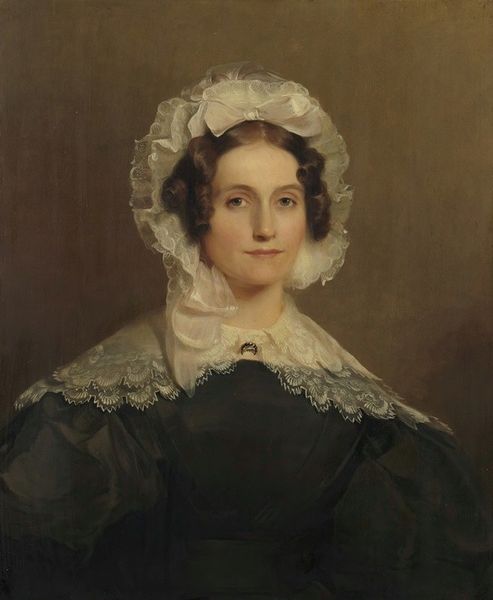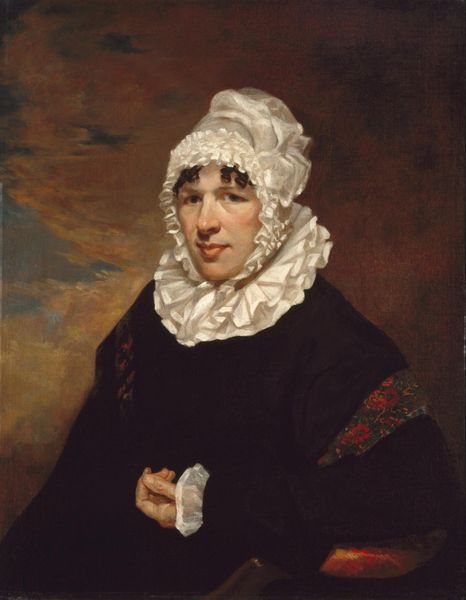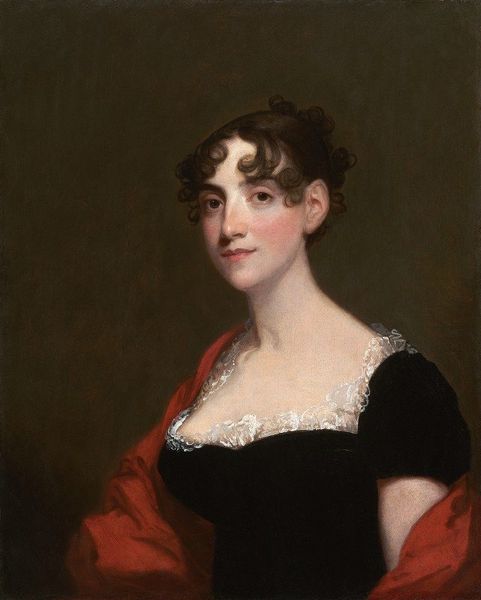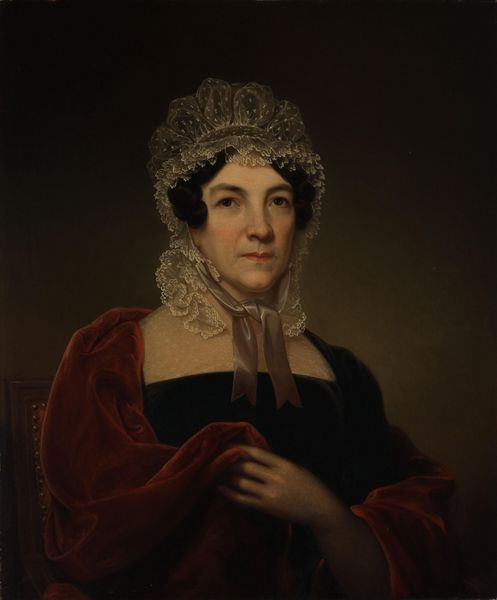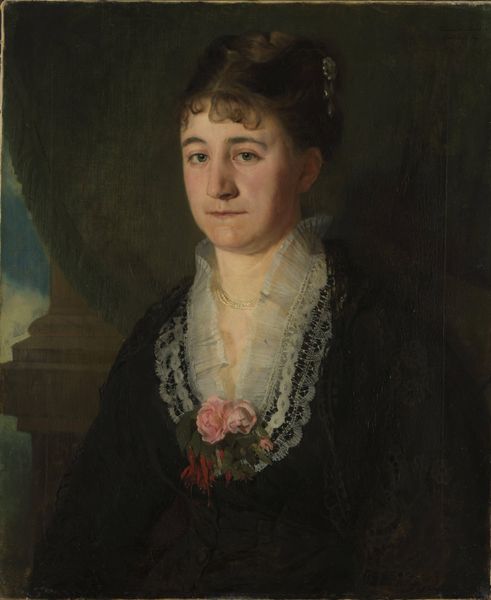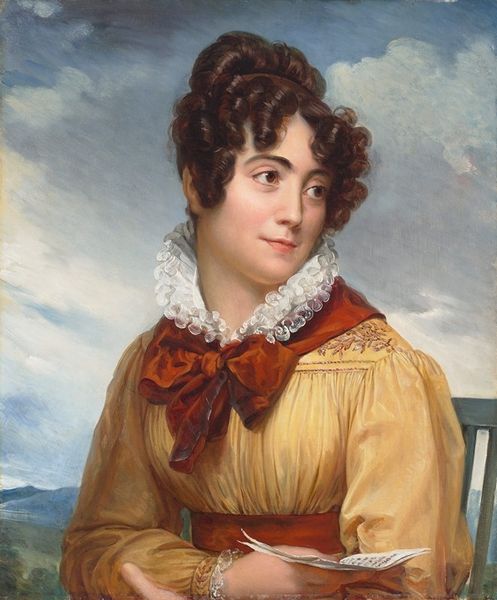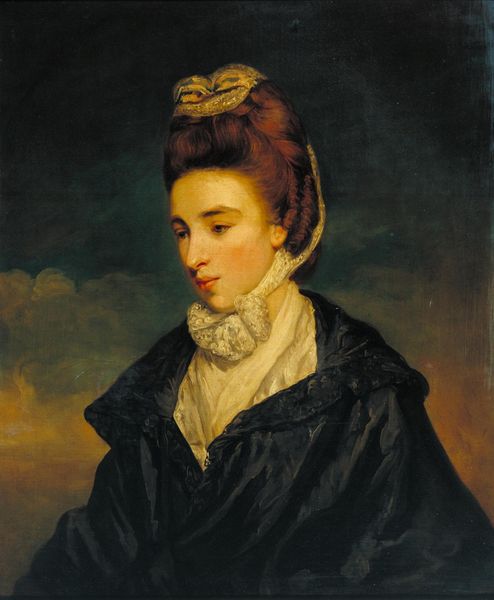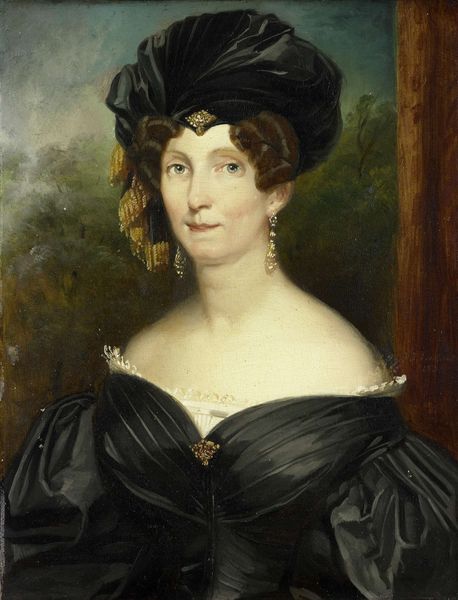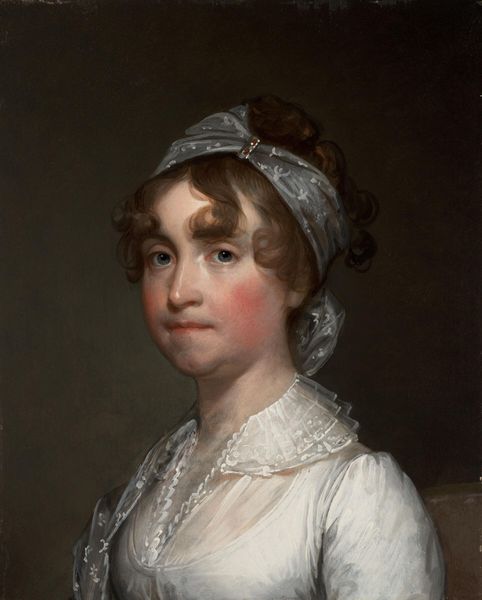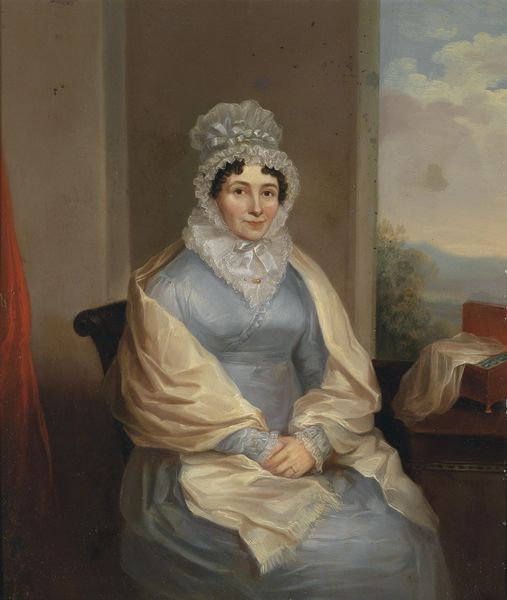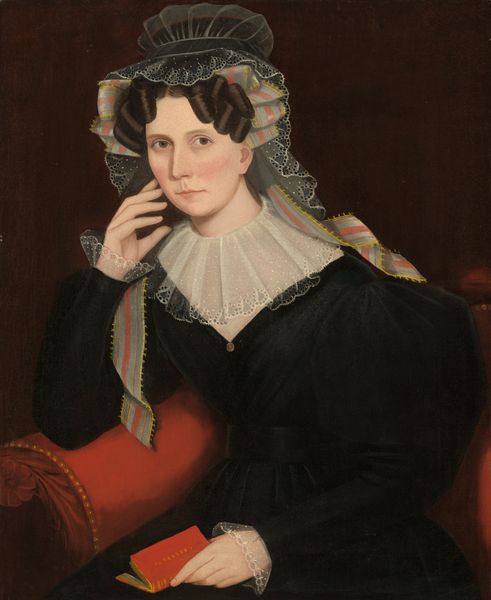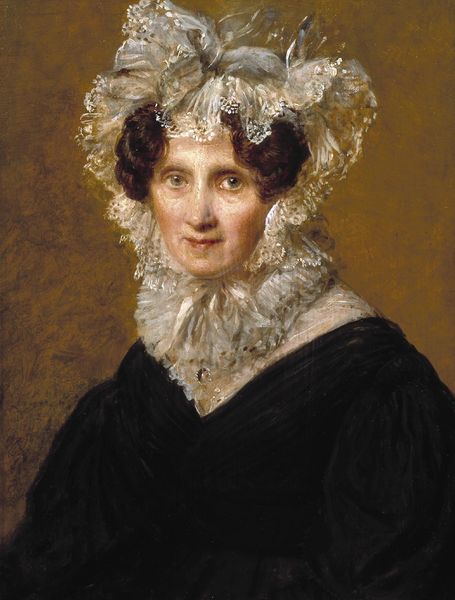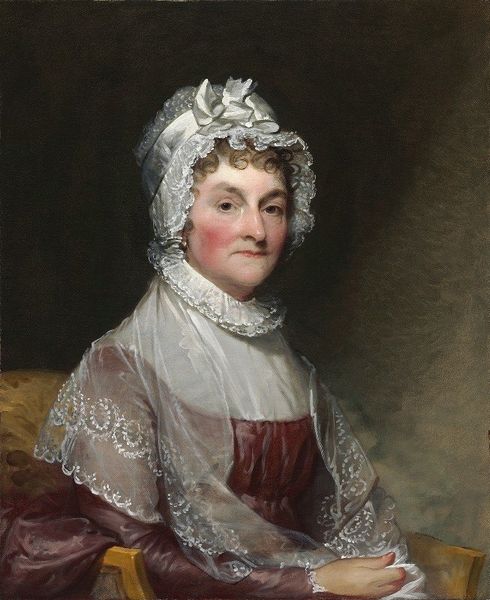
painting, oil-paint
#
portrait
#
painting
#
oil-paint
#
figuration
#
romanticism
Copyright: Public domain
Editor: Here we have Thomas Sully’s oil on canvas painting of Martha Randolph Jefferson. The work appears very proper, yet something in her expression gives me the sense of restrained determination. What can you tell me about this piece? Curator: Well, first it’s important to ask ourselves: how does representing Martha, a woman whose significance largely derives from her relationship to Thomas Jefferson, reproduce patriarchal structures? It invites us to unpack not only her individual story but the broader narrative of women's roles in that era. Editor: That’s interesting. Can you elaborate more about the cultural context of women? Curator: Think about the societal expectations placed on women during the Romantic era, particularly those within privileged circles. Martha Randolph Jefferson’s life was deeply embedded in the political and social landscape of early America, wasn’t it? Editor: It’s interesting to consider how social roles at the time impact the image of her portrayed here. Are you saying it is almost a form of activism in this way? Curator: Precisely! By critically examining portraits like this one, we can gain a more nuanced perspective. Consider the power dynamics at play. Who gets remembered, how, and why? What does Sully's romanticized portrayal conceal or reveal about Martha's own agency? Editor: Thinking about this piece from a perspective of challenging power dynamics has certainly broadened my perception of it. Thank you. Curator: Of course. I hope it enables people to engage more deeply with art history, understanding the intersections of identity, representation, and social justice, particularly for women.
Comments
No comments
Be the first to comment and join the conversation on the ultimate creative platform.
